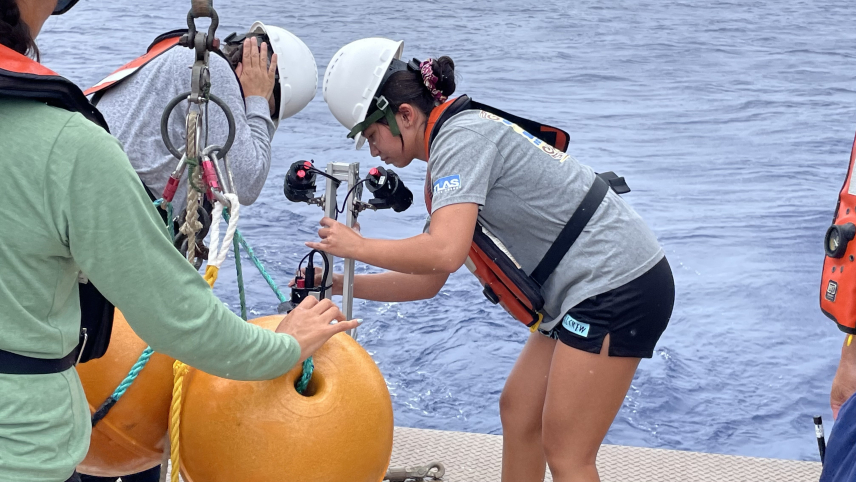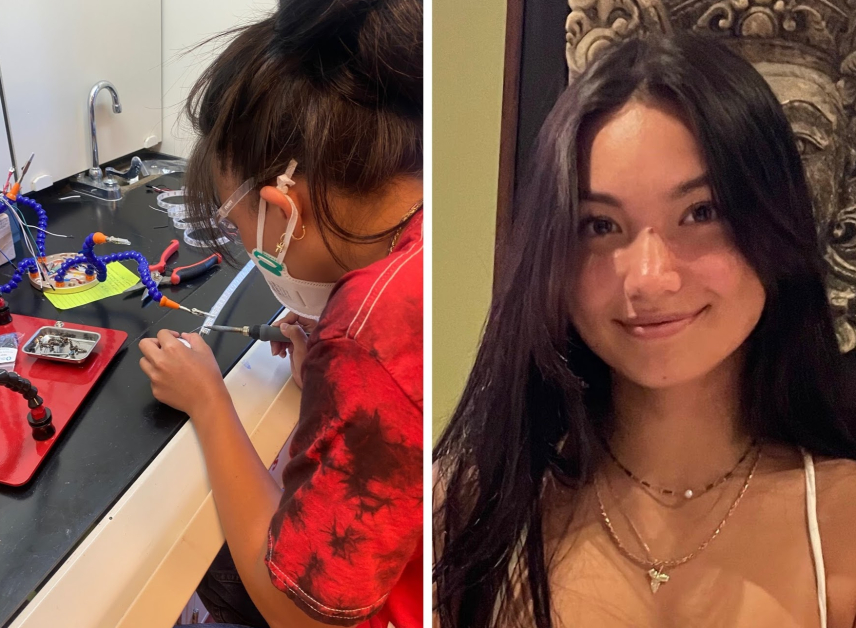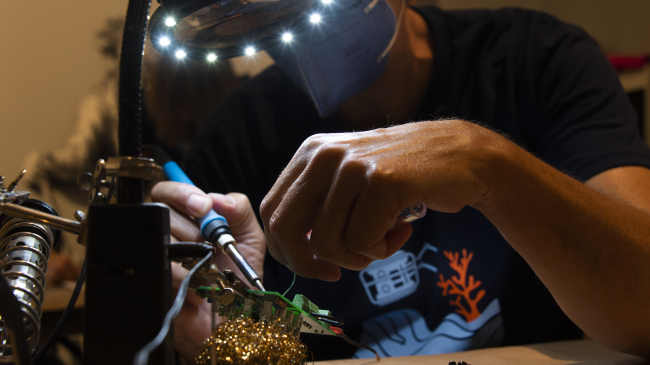The NOAA Fisheries is offering a new exciting opportunity for students through the Hōkūala Kīkaha Kai or “Rising Star on the Ocean” Internship. Currently in its pilot year, the internship aims to reach undergraduate students in local Pacific Islands communities who are interested in hands-on learning that will prepare them for a career in ocean science.

Students complete a paid 10-12 week summer internship experience hosted by Pacific Islands Fisheries Science Center Young Scientist Opportunity (PYSO), which can potentially be followed by an opportunity for a “term” federal position with the Pacific Island Fisheries Science Center that suits the student’s career goals. For the program’s first intern, Malia Martin, this internship was a life-changing experience.
“I didn’t know there were opportunities for students who didn’t have a 4.0 GPA or other experiences,” said Martin, who was born and raised in Oahu, Hawaiʻi, and attends Leeward Community College. “The Hōkūala Kīkaha Kai internship actually encouraged that.”
Once Martin was accepted into the program, she hit the ground running. Her project focused on engineering a solution to help improve Hawaiian Deep 7 bottomfish research surveys. She was asked to develop a light system that would allow the research team to see Deep 7 species, such as onaga (Hawaiian ulaʻula koaʻe, Etelis coruscans), also known as longtail snapper, on video. Onaga and the other six species listed are incredibly valuable both economically and culturally in Hawai‘i, making them species especially important to study and protect. While most fish live in depths where sunlight penetrates, the Deep 7 typically live much deeper at 600-1,000 feet.
“What researchers do is deploy a camera system to capture deep bottomfish,” said Martin. With current technology, it’s difficult to adjust the light intensity, accommodate for pressure changes, or prevent shadows that impair the video. “I did a lot of video analyses and I was able to make computer-aided designs, which was the hardest thing I had to do.” After researching what designs have worked and not in the past, she came up with a prototype that would be more durable during deployment, and could reduce shadows, making it easier for researchers to see the onaga and other Deep 7 species that are particularly hard to see at depth.
Martin 3D printed her design, which was the first time the team used this method, and tested it in the water. Unfortunately, the first few prototypes didn’t work out as Martin predicted, but she kept trying and improving the design. “Whenever we were testing something and it worked, I loved that we were all jumping up and down. When something didn’t work, we were disappointed, but we were immediately thinking what we should do differently next time. I really cherished those moments of collective joy and curiosity, and it showed me what science really is.”

Throughout her internship, she leaned on the strong support of her team and mentors who encouraged her to keep going. “For a little bit I wondered if I was not cut out for this. I was talking to my supervisor, Kyle Koyanagi, and said I felt like an outcast because everyone else is so smart and I feel like I don’t belong here. But they told me I’ll be okay and I’m not expected to know everything. I learned so much stuff in the internship and it really motivates me to do more in school and think about a master’s program.”
You will meet amazing people. Whether you’re experienced or not, they will help you every step of the way. Just don’t psych yourself out and don’t shortchange yourself. You can do more than what you think you can. I never touched engineering before, and I did an engineering project. Be open minded! Things can change as you do more science.
The internship also opened up additional opportunities for Martin. “I’ll be doing outreach to other community colleges, and I was asked by my high school to share about my experiences.” Through her story, she hopes to encourage other students from similar backgrounds to pursue NOAA student opportunities and a career in ocean-related fields. When asked what advice she wants to share with others interested in these fields she said, “Be nice to yourself. At the beginning of my internship, I kept thinking I was nowhere near peoples’ expertise.” She also encourages students to look for opportunities that are available to them. "You will meet amazing people. Whether you’re experienced or not, they will help you every step of the way. Just don’t psych yourself out and don’t shortchange yourself. You can do more than what you think you can. I never touched engineering before, and I did an engineering project. Be open minded! Things can change as you do more science."
Next fall Martin plans to transfer into the Global Environmental Science program at the University of Hawaiʻi at Mānoa and hopes to work with NOAA in the future. Reflecting on her experiences and upcoming transfer, Martin says, “I’m excited knowing that I have really great mentors. Anytime I think I’m going to quit, I remind myself of my experiences at NOAA.”




